Echinodorus cordifolius
Scientific name: Echinodorus cordifolius
Family: Alismataceae
Maximum size reached under cultivation: 35 - 55 cm (13.78 - 21.65 inch)
014
Recommended pH range: 6.2 - 7.1
Recommended water hardness: 4 - 12°dGH (71.43 - 214.29ppm)
0°C 32°F30°C 86°F
Recommended temperature range: 22 - 28 °C (71.6 - 82.4°F)
Preferred propagation method: Divisions
Native to: North America
Growth rate: Normal
Recommended substrate: Sand
Lighting requirements: Bright
Ideal placement in tank: Midground
Family
Alismataceae
Common Name
Spade Leaf Sword
Origin
Echinodorus cordifolius is native to North America and is commonly found in boggy or marshy areas of Mexico and the southern United States. In the wild, it thrives in wetlands, where it grows both fully and partially submerged, adapting well to fluctuating water levels in its natural habitat.
Propagation
Echinodorus cordifolius is propagated through divisions or adventitious plants that form around the base of the mother plant. In an aquarium setting, flower stalks will not develop, but new plantlets often emerge from the base. These plantlets can be carefully separated from the parent plant once they are well-established and replanted into the aquarium substrate. Ensure that the newly planted divisions receive proper nutrients, such as liquid fertilizers or root tabs, to promote healthy root development. In emersed conditions (with leaves growing above water), the plant can produce flowers that can be hand-pollinated to generate seeds, although this method is less common and labor-intensive in aquariums.
Difficulty
Easy. Echinodorus cordifolius is a hardy plant that is relatively easy to care for, provided it has bright lighting and a nutrient-rich substrate. It tolerates a range of water conditions and grows steadily with minimal intervention, making it suitable for both beginner and experienced aquarists.
Short Description
Echinodorus cordifolius, also known as Spade Leaf Sword, is a large, decorative plant that adds height and visual impact to the midground or background of aquariums. Growing up to 55 cm (21.65 inches), this species is best suited for medium to large tanks due to its size. The plant's spade-shaped leaves can develop a marbled surface as they mature, adding depth and texture to aquascapes. While the plant may initially shed some leaves after being introduced to a new tank, it will quickly acclimate and regrow once settled.
Spade Leaf Sword thrives in bright lighting and nutrient-rich substrates such as sand or fine gravel. With proper care, it grows at a steady pace, providing excellent cover for fish and contributing to the overall aesthetic of the tank. Its large leaves create a lush, natural environment, making it a favorite among aquarists who want to establish a visually striking, yet low-maintenance, aquarium.
Maintenance and Care
Echinodorus cordifolius performs best in a pH range of 6.2 to 7.1 and tolerates water hardness from 4 to 12°N (71.43 - 214.29 ppm). The ideal temperature range is between 22 - 28°C (71.6 - 82.4°F), making it suitable for tropical freshwater aquariums. The plant’s root system requires a nutrient-rich substrate, such as sand, to anchor itself and absorb nutrients effectively. Supplementing with liquid fertilizers or root tabs helps sustain healthy growth and prevent nutrient deficiencies.
Bright lighting is essential for optimal growth, as insufficient light may result in slower growth and smaller leaves. Regular trimming of old or dying leaves helps maintain the plant's overall health and appearance, preventing any decaying matter from affecting water quality. As the plant grows, occasional pruning will prevent it from overcrowding the tank, while encouraging new, healthy leaf growth.
Compatibility
Spade Leaf Sword is compatible with a wide variety of peaceful aquarium inhabitants, such as small fish, shrimp, and snails. Its broad leaves provide excellent shelter and hiding spots for smaller fish and fry, contributing to the natural dynamics of a community tank. However, if kept with herbivorous fish, such as certain species of plecos, it is important to monitor for nibbling on the leaves, as this could damage the plant over time. In general, this plant is ideal for medium to large aquariums, where its size can be properly accommodated without crowding other plants or fish.
Submersion and Aquascaping
Fully submersible, Echinodorus cordifolius is highly valued in aquascaping for its bold presence and striking appearance. Its tall, spade-shaped leaves make it ideal for midground or background placement, adding vertical structure and depth to any tank layout. The marbled patterns that develop on the leaves as the plant matures add further visual interest, creating a dynamic contrast with other plants in the aquarium.
Spade Leaf Sword is particularly well-suited for natural or biotope-themed aquariums, where it can be used to replicate wetland or riverine habitats. Its resilience and adaptability make it an excellent choice for aquarists who want to introduce a low-maintenance, yet visually impactful, plant into their setup. Whether used as a centerpiece in a larger tank or as part of a densely planted aquascape, this plant brings lush, vibrant greenery to any aquarium design.


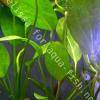 Echinodorus “Ozelot”
Echinodorus “Ozelot” Echinodorus “Red Flame”
Echinodorus “Red Flame”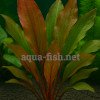 Echinodorus “Red Special”
Echinodorus “Red Special”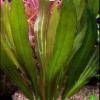 Echinodorus “Rubin”
Echinodorus “Rubin” Echinodorus “Tricolour”
Echinodorus “Tricolour” Echinodorus amazonicus
Echinodorus amazonicus Echinodorus angustifolius
Echinodorus angustifolius Echinodorus bleheri
Echinodorus bleheri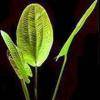 Echinodorus grandiflorus
Echinodorus grandiflorus Echinodorus horemanii
Echinodorus horemanii Echinodorus latifolius
Echinodorus latifolius Echinodorus macrophyllus
Echinodorus macrophyllus Echinodorus major
Echinodorus major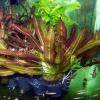 Echinodorus osiris
Echinodorus osiris Echinodorus parviflorus
Echinodorus parviflorus Echinodorus quadricostatus
Echinodorus quadricostatus Echinodorus schlueteri
Echinodorus schlueteri Echinodorus subalatus
Echinodorus subalatus Echinodorus tenellus
Echinodorus tenellus Echinodorus uruguayensis
Echinodorus uruguayensis Sagittaria graminea
Sagittaria graminea Sagittaria platyphylla
Sagittaria platyphylla Sagittaria subulata
Sagittaria subulata